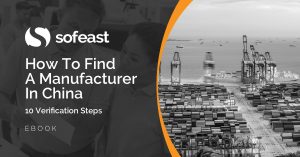Many fabric mills have closed, as part of Beijing’s anti-pollution inspections:
- Some of them were operating a dying and/or printing process without a license
- Some had a license but were found noncompliant with the current regulations
The manufacturing of the base raw materials (the oil-based fabrics, the dyes, etc.) has also been affected by the new environmental policy.
What does it mean? Less supply for the same demand of fabric for making apparel, home textile, and other similar products.
A client told me it has the following effects:
- Prices can’t be negotiated easily, and have tended to go up.
- MOQs (Minimum Order Quantities) went up, as the remaining dying facilities can pick the work they want to do and turn away unattractive jobs.
- Relatively small orders get bumped. Especially if the cut & sew factory is very small in the eyes of the fabric supplier.
- Certain types of orders (e.g. printed fabric) are harder to purchase. This might be due to the fact that it comes with a higher pollution risk (water emissions, VOCs emissions…) — I can’t be sure.
- Orders from cut & sew factories located in South Asia (India, Bangladesh, Pakistan) are given lower priority, as they are seen as less valuable customers by most Chinese manufacturers. These countries import a lot of materials from China and are heavily impacted too.
What do garment exporters do about it? They scramble to get a new source when needed, they pass on cost increases to their customers (who are often pushed for lower prices), and they delay productions when forced to. It is a 99% reactive approach. The attitude is, ‘What do expect me to do? This is impacting all of us at the same time.’
What do their customers think? The list I can write is, they are not happy.
Some apparel buyers told me their suppliers (the cut & sew factories) have become harder to work with:
- Higher cost due to the unfavorable USD/RMB exchange rate
- The higher cost of dying the fabric and higher cost of raw materials
- Higher wages, accelerated by the lack of migrant workers on the coast
- Fewer apparel manufacturers located in China, as some players go bankrupt or move to another country
- Increasing raw material prices are creating a lot of disturbance in the market.
—
Have you observed this, also? Any tips for mitigating these issues?
Are you wondering how to find a manufacturer in China who is well-suited to your needs and can also deliver on their promises?
Sofeast has developed 10 verification steps to help you find the right manufacturer. They’re shared in this FREE eBook: “How To Find A Manufacturer In China: 10 Verification Steps.”
It covers:
- Background checks
- Manufacturing capabilities
- Quality system auditing
- Engineering resources
- Pricing, negotiation, & contracts
- …and much, much more
Just hit the button below to get your copy:


Great and practical report ! We as a Garment manufacturer and importer of Chinese fabrics are facing same problem. Lot of uncertainties are prevailing at this moment.